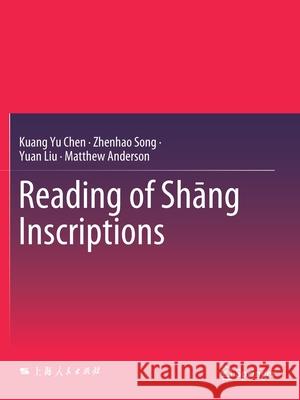Reading of Shāng Inscriptions » książka
topmenu
Reading of Shāng Inscriptions
ISBN-13: 9789811562167 / Angielski / Miękka / 2021 / 574 str.
Reading of Shāng Inscriptions
ISBN-13: 9789811562167 / Angielski / Miękka / 2021 / 574 str.
cena 441,75
(netto: 420,71 VAT: 5%)
Najniższa cena z 30 dni: 385,52
(netto: 420,71 VAT: 5%)
Najniższa cena z 30 dni: 385,52
Termin realizacji zamówienia:
ok. 22 dni roboczych.
ok. 22 dni roboczych.
Darmowa dostawa!
Kategorie BISAC:
Wydawca:
Springer
Język:
Angielski
ISBN-13:
9789811562167
Rok wydania:
2021
Ilość stron:
574
Waga:
1.26 kg
Wymiary:
27.94 x 20.96 x 2.95
Oprawa:
Miękka
Wolumenów:
01
Dodatkowe informacje:
Wydanie ilustrowane











